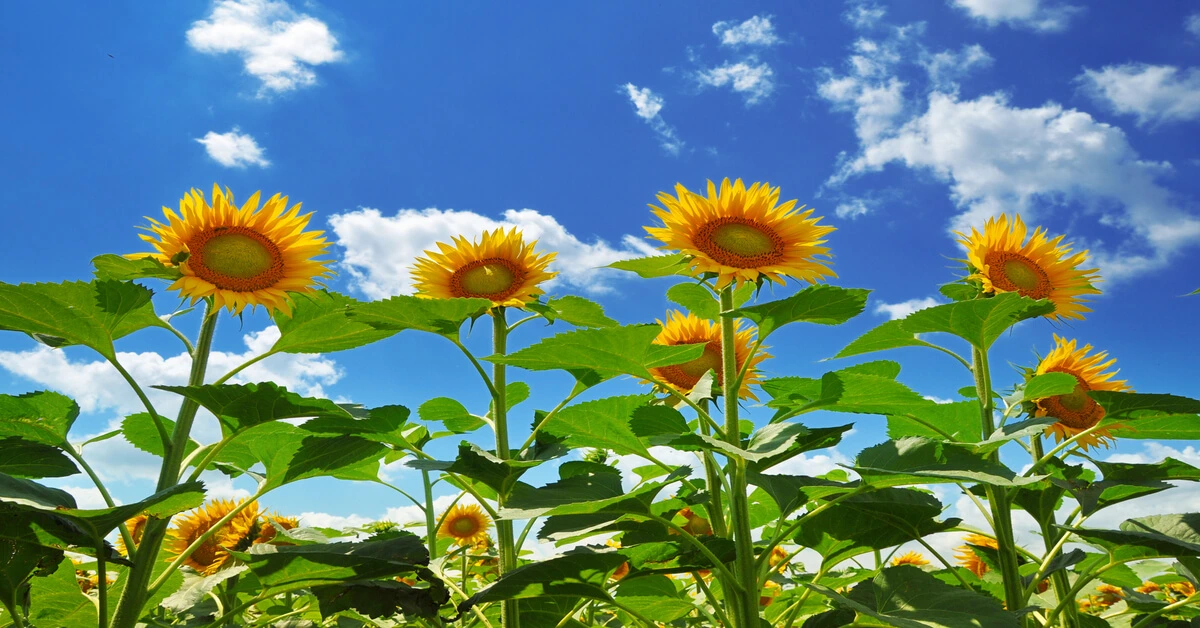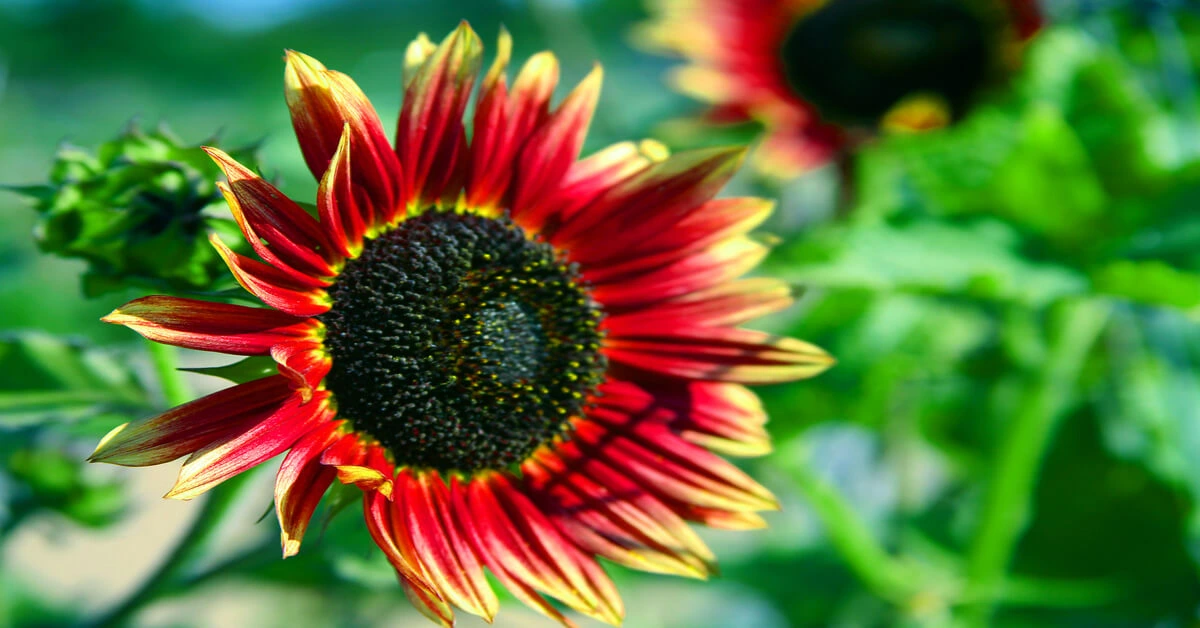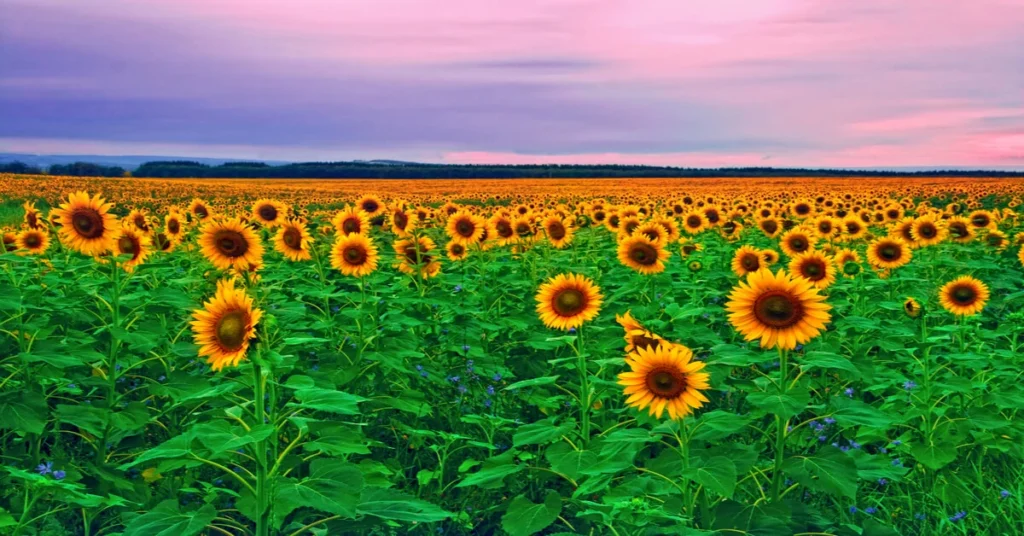Sunflowers are among the most delightful and vibrant flowers to add to your garden. These beacons of beauty can quickly transform any space into a captivating showcase. This comprehensive guide will serve as your reference to enhance your knowledge and skills on how to grow and care for sunflowers.
A Brief Introduction to Sunflowers
Belonging to the genus Helianthus, sunflowers are native to North America. The most common type is the annual sunflower, Helianthus annuus.
These flowers are relatively easy to grow, displaying bright yellow petals that encircle a dark flower head. In addition to their aesthetic appeal, sunflowers provide edible seeds and serve as a magnet for pollinators. Their tall, sturdy stems make them excellent as cut flowers and for decorative purposes.
How to Grow Sunflowers

Growing sunflowers is relatively easy, making them one of the easiest flowers to grow, even for novice gardeners. Whether sowing sunflower seeds directly into the garden or starting them indoors, proper planning and care are necessary for the best results.
Planting Sunflowers From Seed
Sunflower seeds are planted in the late spring after the threat of frost has passed. Sow seeds about 1 to 2 inches deep and 6 inches apart. Provide about 2 to 3 feet per plant to grow more giant sunflowers. For smaller sunflower varieties, planting the seeds 2 feet apart will suffice.
Once planted, sunflower seeds will germinate in 7 to 10 days, provided the soil temperature is between 70-85°F (21-29°C). After germination, expect the first bloom in about 70-100 days, depending on the variety. Sunflowers bloom from late summer to fall, offering season-long appeal.
Sunflower Care

Proper care for sunflowers is crucial to ensure their health and longevity.
Soil
Maintaining well-draining soil is crucial for sunflower health. Waterlogged soil can lead to root rot and other diseases. To improve the soil’s drainage, add organic matter or compost. Also, regularly check the soil’s pH; sunflowers prefer slightly acidic to neutral soil (pH 6.0 to 7.5).
Watering
While mature sunflowers can withstand periods of drought, young sunflowers need consistent watering. Water deeply and infrequently to encourage profound root growth.
Lighting
As the name suggests, sunflowers thrive in full sun. They need at least six hours of direct sunlight daily, but more is better. Ensure that your sunflower plants are kept from taller plants or structures.
Fertilizing
While sunflowers aren’t heavy feeders, applying a slow-release fertilizer when planting can provide the necessary nutrients. Avoid high-nitrogen fertilizers, as these can lead to lush foliage at the expense of blooms.
Temperature and Growing Zones
Sunflowers are resilient and can thrive in a wide range of climates. However, they are best suited for growing zones 2-11. They prefer warm temperatures and should be sheltered from strong winds to prevent damage to the stems and flower heads.
Sunflower Varieties
An array of types of sunflowers are available, each with unique characteristics.
Annual Sunflowers
As the name suggests, annual sunflowers grow, bloom, and die within one growing season. These include famous varieties like ‘Russian Giant’ and ‘Mammoth,’ which can grow up to 12 feet tall. ‘Teddy Bear,’ a smaller variety, reaches a modest 1 to 2 feet tall.
Perennial Sunflowers
Perennial sunflowers return year after year and bloom in the late summer to fall. Varieties like ‘Lemon Queen’ and ‘Maximilian’ are popular choices, offering vibrant displays and attracting a host of pollinators.
Harvesting and Propagating Sunflowers
Harvest Sunflower seeds for consumption, cut sunflowers, or future planting. To harvest sunflower seeds, cut the sunflower head off the plant and let it dry—on or off the stem—until the back of the head turns brown. Then, brush across the seed heads to remove the seeds.
Sow the harvested seeds in your garden following the earlier instructions to propagate sunflowers.
Conclusion
Sunflowers are an excellent addition to any garden. They bring a touch of cheer with their vibrant colors and large flower heads, and they are also one of the simplest flowers to grow and care for. Whether you’re a seasoned gardener or just starting, sunflowers will bring joy and fulfillment to your gardening experience.


